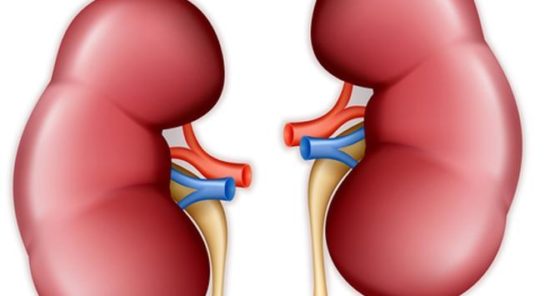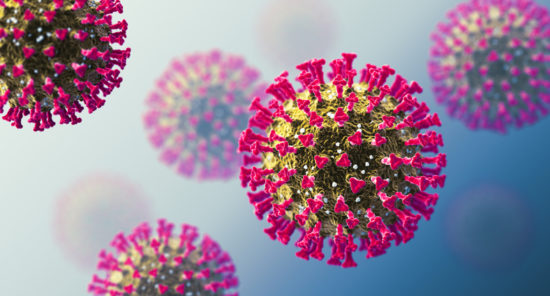Credit: Original article published here.Up to 38% of patients with end-stage renal disease experience cognitive impairment. The risk for developing neurocognitive impairment is increased in patients on maintenance hemodialysis and is associated with increases in disease progression and recovery time. Patients who are referred to evaluation for placement on the kidney transplant waitlist may or may not be referred to neurocognitive evaluation (NCE). Barcenia Morgan, MD, and colleagues at the University of Texas Medical Branch, Galveston, Texas, conducted a retrospective cohort study to examine the discrepancies between referred and nonreferred patients in waitlist placement rates, transition time from initial evaluation to waitlist, and selection for transplant surgery. The researchers reported results of the study during a poster session at the National Kidney Foundation Spring Clinical Meetings 2023 in a poster titled Renal Transplant Transition Rates After Neurocognitive Evaluation in ESRD. The study cohort included 1719 patients evaluated for kidney transplant from January 2015 to December 2019 at a single center. The cohort was divided into two groups: (1) 155 patients who were referred for NCE prior to consideration for renal transplant and (2) 1564 patients who were not referred for NCE. The researchers compared outcomes between the two groups, including
Credit: Original article published here.Monogenic kidney diseases are associated with approximately 10% of occurrences of chronic kidney disease (CKD). According to Fouad Chebib, MD, and colleagues, while there are clinical diagnostic criteria available for many renal conditions, there remains a high incidence of misdiagnosis. Genetic testing is available to reclassify or provide an accurate CKD diagnosis, and it can enable personalized disease management. The researchers conducted a comparison study to describe the utility of genetic findings to confirm, clarify, or reclassify a clinical diagnosis among participants in the RenaCARE study. Results were reported during a poster session at the National Kidney Foundation Spring Clinical Meetings 2023 in a poster titled The Impact of Genetic Test Results on Kidney Disease Diagnosis. Clinicians provided clinical diagnosis and history for each enrolled patient; the data were compared with results of genetic testing with a next-generation sequencing-based 365-kidney gene panel (the Renasight test). Positive genetic results were reported. Clinical history was compared with known results of patients’ genetic findings, and the impacts of genetic testing on each clinical diagnosis were identified. The study enrolled 1624 patients. Mean age was 55 years (range, 18-96 years). The researchers assessed 318 patients with variant(s) in a single
Credit: Original article published here.Previous studies have examined the role of medical nutrition therapy (MNT) in progression of chronic kidney disease (CDK). However, according to Christopher G. Rowan, PhD, and colleagues, there are few data available on the relationship between MNT and hyperkalemia. The researchers conducted a retrospective data analysis in a cohort of adults with stage 3-4 CKD and hyperkalemia (diagnosis of hyperkalemia and serum potassium >5.0 mmol/L) who received MNT from January 1, 2019, to August 31, 2022. Results were reported during a poster session at the National Kidney Foundation Spring Clinical Meetings 2023 in a poster titled Recurrence of Hyperkalemia Following Dietary Counseling, REVOLUTIONIZE I Real-World Evidence Study. The study utilized electronic health record data from TriNetX Dataworks, USA. To focus on patients who received MNT as first-line therapy, those who were treated with oral antihyperkalemia therapy (potassium binder) within 6 months prior to MNT were excluded. Follow-up was censored at the first of 6 months following initiation of MNT, initiation of outpatient therapy with an oral antihyperkalemia therapy, death, or the end date (August 31, 2022). The researchers analyzed the percentage of patients who had a hyperkalemic event at 0-1, 0-2, 0-3, 0-4, 0-5, and 0-6
Credit: Original article published here.While COVID-19 is recognized as a typical syndrome of acute respiratory illness, it can also affect multiple organ systems. Acute kidney injury (AKI) has been associated with both direct and indirect responses to infection with COVID-19; available evidence suggests that AKI related to COVID-19 is seen in more than 20% of hospitalized patients and more than half of patients admitted to the intensive care unit. Neha Jain, MD, and colleagues at Highland Hospital, Alameda Health System, Oakland, California, performed a retrospective chart review to examine the incidence of AKI, risk factors, and outcomes in patients with COVID-19 at their center. Results were reported during a poster session at the National Kidney Foundation Spring Clinical Meetings 2023 in a poster titled COVID-19-Related Acute Kidney Injury: Incidence, Risk Factors, and Outcomes in a County Hospital Cohort. The review included charts for all patients older than 18 years of age who were admitted to the center with a positive COVID-19 test between April 2020 and March 2021. Relevant clinical data were collected from electronic health records and then statistically analyzed. AKI was defined as an increase in serum creatinine ≥0.3 mg/dL from baseline during the hospitalization. The primary outcome
Credit: Original article published here.According to the United States Renal Data System, use of home dialysis has increased since 2017. Across all payer types, the greatest growth has been seen in home hemodialysis. The Advancing American Kidney Health (AAKH) executive order set a goal of initiating home dialysis or preemptive kidney transplant for 80% of patients with incident end-stage renal disease (ESRD). While new payment models from the Centers for Medicare & Medicaid Services (CMS) reward payers for achievement of higher rates of home dialysis, use of home hemodialysis is lowest among patients with Medicare Advantage health insurance coverage: 1.3% versus 3.0% among patients with original Medicare fee-for-service (FFS) coverage without Medicaid. During a poster session at the National Kidney Foundation Spring Clinical Meetings 2023, Stephan Dunning, MBA, and colleagues at Outset Medical, Inc., San Jose, California, reported estimates of the per-member per-month (PMPM) costs for a Medicare Advantage health plan and 5-year savings generated by incentivizing home dialysis aligned with the AAKH goal. The poster was titled Home Hemodialysis Can Help Reduce Total Cost of Care Among Medicare Advantage Members With ESRD. The researchers modeled a Medicare Advantage health plan with 500 members on dialysis. They included inputs from
Credit: Original article published here.According to Y. Diana Kwong, MD, and colleagues, there are few data available on the symptom burden and quality of life among patients with acute kidney injury treated with intermittent hemodialysis (AKI-D). The researchers conducted a prospective cohort study within a clinical trial (NCT04218370) comparing different hemodialysis schedules in patients with AKI-D. Results were reported during a poster session at the National Kidney Foundation Spring Clinical Meetings 2023. The poster was titled Understanding Symptoms and Quality of Life of Patients With AKI-D. Participants in the trial were from two large university health systems. They were asked to complete the dialysis symptom index (DSI) and to rate their overall health and quality of life in the past week on a scale of 1 (very poor) to 7 (excellent) at three time points. The cohort included 95 participants; of those, 64 completed the survey at study entry point. Six of the 95 declined to participate and 24 had altered mental status, leading to incompletion of the survey. Twenty-eight of the 64 initial study participants were followed to day 90. Loss to follow-up was related most commonly to an inability to contact the patient (n=10) and death (n=6). Of
Credit: Original article published here.The majority of patients receiving peritoneal dialysis have end-stage kidney disease (ESKD). However, according to Nicholas Seidler, MD, and colleagues, current data on peritoneal dialysis in patients with critical illness focus on utilization of the modality in patients with acute kidney injury. The researchers conducted a study designed to examine the mortality and temporal trends for patients receiving peritoneal dialysis in the setting of critical illness. Results of the retrospective cohort study were reported during a poster session at the National Kidney Foundation Spring Clinical Meetings 2023. The poster was titled Outcomes in Critical Care Admissions in Peritoneal Dialysis Patients. The study cohort included adult patients with ESKD receiving peritoneal dialysis who were admitted to an intensive care unit (ICU) at Rhode Island Hospital, Providence, and Miriam Hospital, Providence, between January 1, 2015, and January 1, 2022. Data on dialysis modalities used in the ICU, admission outcomes, and 1-year outcomes were collected. The analysis included 67 critical care admissions among 45 patients. Fifty-two percent were female, and mean age was 54 years. During the ICU admission, 64% received peritoneal dialysis, 6% received hemodialysis, 9% received peritoneal dialysis and hemodialysis, and 16% received peritoneal dialysis, hemodialysis, and
Credit: Original article published here.Researchers, led by Amara Sarwal, MD, conducted a study to determine whether chronic kidney disease (CKD) and heart failure are independent risk factors for Alzheimer disease/related dementias (ADRD) in a cohort of US veterans with type 2 diabetes. Results were reported during a poster session at the National Kidney Foundation Spring Clinical Meetings 2023 in a poster titled Cardiorenal Syndrome: CKD, Heart Failure, and Risk for Dementia. The cohort included US veterans ≥65 years of age with type 2 diabetes and two outpatient measurements of serum creatinine at least 60 days apart from January 1, 2008, to December 31, 2010. The date of the second creatinine measurement was considered the index date. The CKD Epidemiology Collaboration equation was used to define estimated glomerular filtration rate. International Classification of Diseases, Tenth Revision(ICD 9/10) codes from January 1, 2000, to the index date were used to define the presence of heart failure and other comorbidities. Veterans with ADRD at baseline were excluded. Occurrences of ADRD subsequent to baseline were identified by ICD-9/10 codes from the index date to December 31, 2021. The cohort included 362,598 US veterans. Of those, 14.6% had heart failure at baseline, 34.8% had stage
Credit: Original article published here.Kidney transplant recipients with gout and hyperuricemia face increased risks for adverse outcomes. Results of the PROTECT study demonstrated that pegloticase lowered serum urate in 89% of kidney transplant recipients with uncontrolled gout. During a poster session at the National Kidney Foundation Spring Clinical Meetings 2023, Nicola Dalbeth, MBChB, MD, and colleagues reported associated changes in monosodium urate deposition volume (Vmsu) as seen on dual-energy computed tomography (DECT). The poster was titled Monosodium Urate Crystal Depletion in Renal Transplant Recipients Treated With Pegloticase: PROTECT Serial Dual-Energy Computed Tomography Findings. Inclusion criteria were uncontrolled gout (serum urate, ≥7 mg/dL; oral urate-lowering therapy refractory/intolerant; and ≥2 flares/year, ≥1 tophi, or chronic gouty arthritis), kidney transplant >1 year prior, graft estimated glomerular filtration rate (eGFR) ≥15 mL/min/1.73 m2, and stable immunosuppression. All patients received ≤24 weeks of pegloticase (8 mg biweekly; serum urate response, <6 mg/dL for ≥80% of month 6). DECT imaging was measured with standard protocols at screening (Scr). Vmsu was measured at weeks 14 and 24 with default postprocessing settings. Joints with Scr and week 24 images and Scr Vmsu ≥0.5 cm3 were included. The Vmsu criterion reduced the effects of DECT artifact. Eight patients underwent
Credit: Original article published here.According to Dua Abedeen, MPH, and colleagues at SUNY Downstate Health Sciences University, Brooklyn, New York, undue financial stress may force patients to choose between medication and other living expenses, resulting in inferior rates of medication adherence. Unless directly asked, patients may not disclose issues with finances to their provider. Using a Likert scale survey, the researchers interviewed a random convenience sample of 24 patients receiving dialysis and 16 kidney transplant recipients in an inner-city area. Results of the interviews were reported during a poster session at the National Kidney Foundation Spring Clinical Meetings 2023 in a poster titled Association of Financial Stressors With Medication Nonadherence in Inner-City Patients With ESKD. Mean age of the interviewed patients was 59 years, 77% (n=30) identified as Black, 70% (n=26) were men, 57% (n=20) had less than a college education, and 65% (n=13) made less than $40,000 per year. Mean dialysis vintage was 5.2 years, and mean time since transplant was 4.0 years. All of the patients had insurance. More than half of the cohort (52%, n=19) said that finances affected their ability to control their medical condition, 42% (n=15) said they had difficulty meeting monthly bills, and 40%










